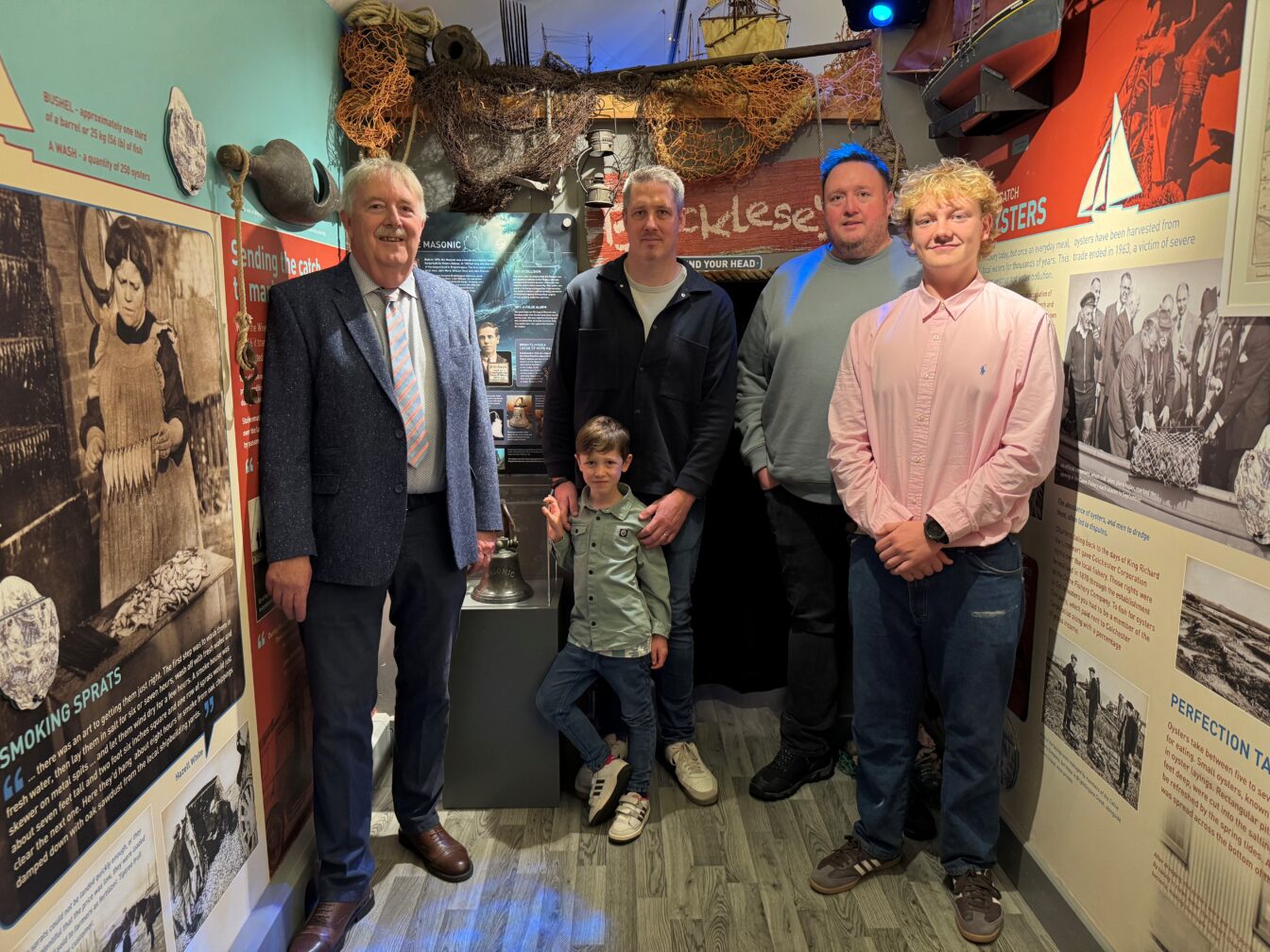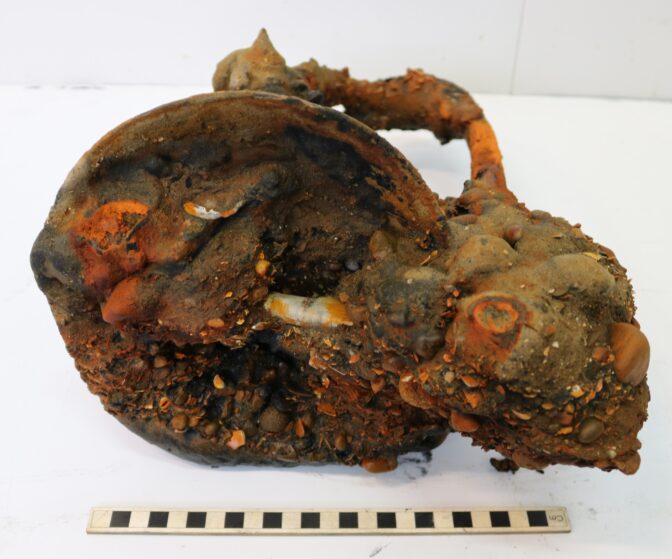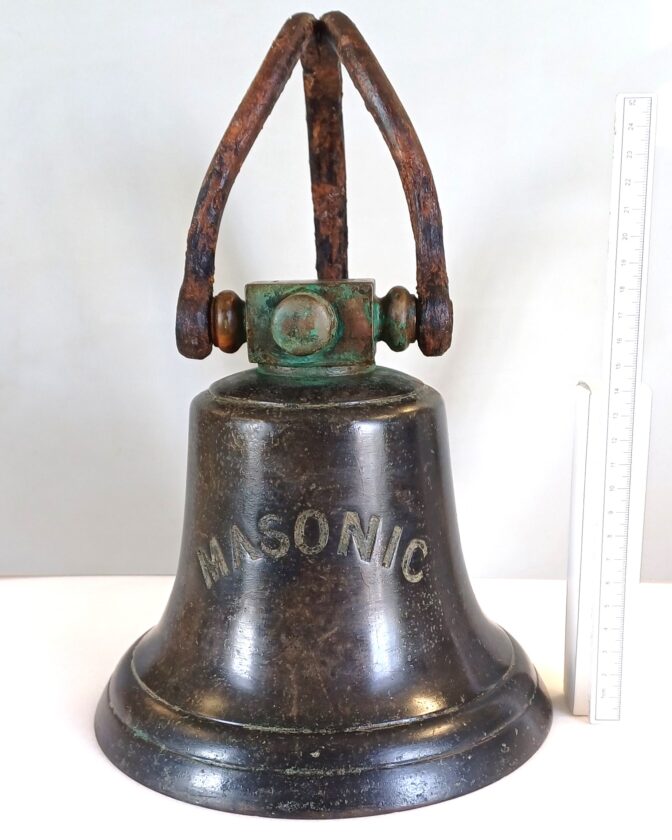Ship’s bell raised from the depths of the North Sea after nearly 130 years following discovery during Dogger Bank Wind Farm excavation works

- 19th Century ship’s bell belonged to The Masonic vessel that sunk in 1893 and has now been fully restored to its former glory after lying forgotten at the bottom of the North Sea
- Copper-alloy bell will be welcomed to its new home at Brightlingsea Museum in Essex by great-grandson of one of the vessel’s original owner
It had lain undisturbed at the bottom of the North Sea for nearly 130 years but now a historic ship’s bell will toll once again thanks to restoration work commissioned by Dogger Bank Wind Farm.
The 12kg and 15cm high copper-alloy bell was originally installed on The Masonic vessel in 1876, but went down with the ship and its entire crew off the coast of Yorkshire during fierce storms in November 1893. Newspaper reports of the time refer to the remains of passengers and crew from the vessel being found on the beach at Saltburn-by-the Sea during a four-day hurricane
The Great Storm as it was known was blamed for the deaths of 335 people at sea, with over 140 vessels abandoned or foundering including The Masonic, which went down in a stretch of water off the Yorkshire coast
There the bell lay undisturbed on the seabed until 2022 when the team carrying out a subsea survey as part of pre-construction activities on Dogger Bank Wind Farm – set to be the largest in the world when complete – discovered an unexplained form embedded into the floor of the sea.
The object was initially thought to be an unexploded bomb, but onshore inspections revealed a bell-shaped object with the inscription ‘Masonic’. After undergoing specialist restoration work involving X-ray imaging, the maritime treasure will now be housed at the Brightlingsea Museum near Colchester in Essex.

Credit: MSDS Marine
Remarkably the museum was also able to track down the great-grandson of one of the vessel’s original owners, who will be joined by representatives from Dogger Bank Wind Farm for a special unveiling ceremony of the Masonic Bell at the Brightlingsea Museum today (21st October 2025).
The Deputy Receiver of Wreck, Andrea Bailey, worked with representatives from MSDS Marine to uncover the story behind the bell, and how it had come to be nestled into an area of seabed where offshore electricity cables were to be installed over 130 years later.
The bell was correctly registered with the Receiver of Wreck, part of HM Coastguard, but with no-one claiming ownership, it became the property of The Crown and it was agreed its final journey would be back to Brightlingsea for exhibition in the local museum.
Deputy Receiver of Wreck Andrea Bailey, said:
“The fate of the Masonic and her crew was a tragedy, far away from where it first set sail. So it feels right that the bell – the last surviving piece – is returned to where it was built.
“Reuniting objects with their owners or finding a proper home is best done by registering maritime finds with the Receiver of Wreck. By doing so, you can help share history and ensure artefacts end up where they truly belong.”
Dogger Bank Wind Farm is being built in three phases off the Yorkshire coast by developers SSE, Equinor and Vårgrønn and once fully complete in 2027, will be capable of powering up to six million homes annually.

Credit: MSDS Marine
Lizzy Reynolds, Lead Offshore Consent Manager for Dogger Bank Wind Farm, said:
“When we set out to build the world’s largest offshore windfarm, we had no idea that our careful archaeological surveys would yield up this historic gem from the depths of the ocean floor.
“We feel it is the right thing to do to fully restore the Masonic Bell to its former glory as a tribute to those brave mariners who perished on board the ship during violent storms of 1893. Our delivery partners Haskoning and MSDS Marine have brought the bell back to life and it will now have a new dry home at the Brightlingsea Museum.”
Richard Dove, great-grandson of Captain William Dove, one of the owners of the Masonic, said:
“Raising the Masonic bell from the deep after its 132 years of seabed slumber is a tangible link to my great-grandfather.
“Hopefully the fully restored bell is testament to those brave souls that sadly perished in 1893, and we are deeply grateful to everyone who has breathed new life into this wonderful piece of maritime history.”
Carola Del Mese, Conservator at MSDS Marine and Heritage led the restoration of the 19th century bell on behalf of Dogger Bank Wind Farm contractor, Haskoning.
Carola added:
“Conserving the Masonic bell has been a technical challenge and a privilege, and I’m honoured to have been part of its return journey home to Brightlingsea as a commemoration to the crew and an addition to local history.”
Local history experts from the Brightlingsea Museum believe The Masonic vessel was built by shipbuilder Robert Aldous, to transport coal, building materials and food during the 19th Century.
Margaret Stone, Brightlingsea Museum Curator, said:
“We are delighted to welcome the bell from the Brightlingsea-built barge, the Masonic, to the museum. This is the first artefact for our collection which comes from an actual vessel built in the town during the Nineteenth Century. What makes it even more special are the links the Masonic has to an organisation and families still in the town - and even the museum itself. We are most grateful to all that have made this possible.”
Image caption: Three generations of the Dove family attended the unveiling of the Masonic ship’s bell at Brightlingsea Museum.
